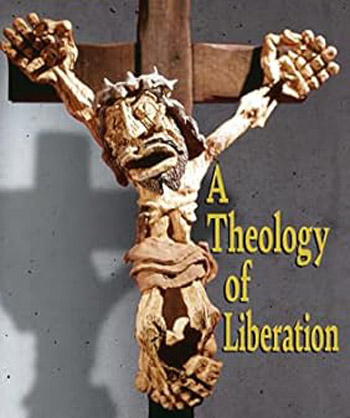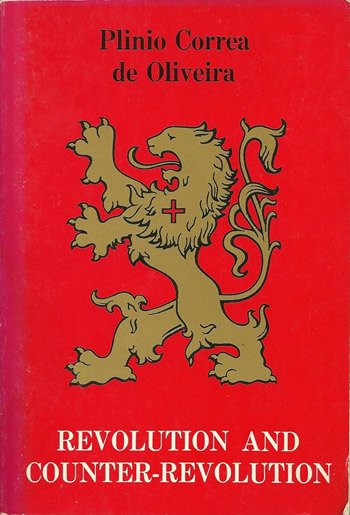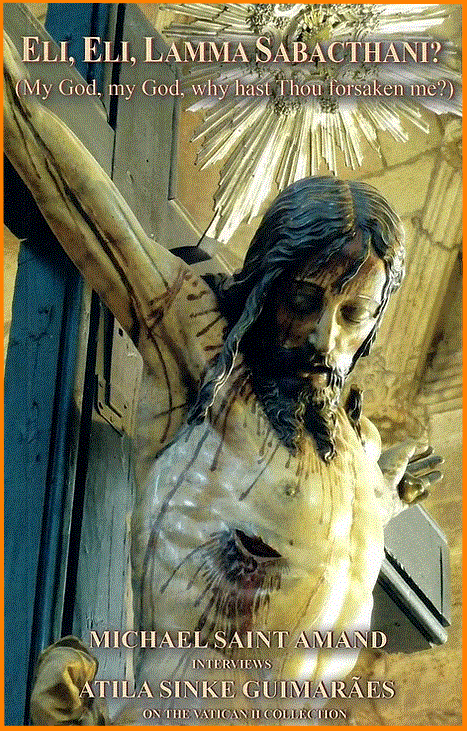Social-Political Issues
 |
 |
 |
 |
 |
 |
 |
Catholics & The Comfort Zone
We live in an epoch when the speed of communication allows us to know almost instantly what happens on the other side of the planet; further this media machine can transmit and transform words, artistic expressions, clothing styles, social behaviors, political opinions and even tendencies into collective ways of beings.
This is what has happened with the expression comfort zone. It was first used, it seems to me, by experts in psychology to characterize a situation in which a patient does not want to change or resolve his interior dramas with a solution radically opposed to his habits. He wanted to remain in his comfort zone.
Then, the expression comfort zone spread around the world and began to be used in a variety of professional situations, encouraging a person to break with a stable situation or leave off old ways in order to produce more and make more money.

 Some businesses conducted seminars for their employees emphasizing the need to leave the comfort zone, that is, the old style of work and habitual routine and face the challenge of discovering new sales techniques, even at the risk of failure.
Some businesses conducted seminars for their employees emphasizing the need to leave the comfort zone, that is, the old style of work and habitual routine and face the challenge of discovering new sales techniques, even at the risk of failure.
The expression took off and everywhere, like an orchestra under the baton of a maestro, people started to repeat:
 When we observe nature we see that every species of animal or plant seeks a type of comfort zone that will guarantee everything it needs to survive and subsist. The animal species in particular are always aware of the change of seasons to maintain their lives.
When we observe nature we see that every species of animal or plant seeks a type of comfort zone that will guarantee everything it needs to survive and subsist. The animal species in particular are always aware of the change of seasons to maintain their lives.
Therefore, to look for a comfort zone in this way is more than reasonable, it is necessary. In this meaning, it is good and almost instinctive that men seek comfort zones to maintain their physical, psychological and spiritual integrity.
The cracks that broke man’s spiritual unity
A reader could ask: Does man also need spiritual integrity?
 Starting with the revolt of Luther and the coming of Protestantism, the great cathedral of certainties of the Catholic world suffered a seismic shock that broke its internal consistency. Through that crack came the illusion of a new spiritual liberty for a great number of souls who began to doubt the eternal truths of Faith and imagine that each one could reinterpret them following his own caprice.
Starting with the revolt of Luther and the coming of Protestantism, the great cathedral of certainties of the Catholic world suffered a seismic shock that broke its internal consistency. Through that crack came the illusion of a new spiritual liberty for a great number of souls who began to doubt the eternal truths of Faith and imagine that each one could reinterpret them following his own caprice.
Even in Latin countries where Protestantism was rejected, a seed of doubt was planted in the subconscious of countless persons, who in some situations considered it their “right” to disagree with the teaching of the Catholic Church. In this realm we can find, for example, an enormous number of Catholics who, although they know the doctrine of the Church on the indissolubility of marriage, are nonetheless favorable to divorce.
Breaking the unity of thought
Another consequence of this “right to disagree” with truth has had a curious projection among Catholics. In a bygone era to be Catholic was a way of defining oneself. It used to mean that a man was in full agreement with everything the Church taught and thus governed his life accordingly. Catholics who were inconsistent in the practice of the principles of dogma and morals were either sinners or lukewarm Catholics.
Today, the germ of “free examination” has entered this realm, and we have multiple “types” of Catholics who all believe they are equally Catholic. Moving from the left to the right, we have progressivists, mainstream and traditionalist Catholics. In each category there are subdivisions.
Different progressivist positions
The progressivists have different layers, primarily the social, the liturgical, the moral and the ecumenical.
 In the social layer, the more radical progressivists are those who adhere to Communism, such as members of Liberation Theology, e.g. Camillo Torres in Colombia, Ernesto Cardenal in Nicaragua, Pedro Casaldaliga in Brazil, Samuel Ruiz in Mexico, Oscar Romero in San Salvador, among many others.
In the social layer, the more radical progressivists are those who adhere to Communism, such as members of Liberation Theology, e.g. Camillo Torres in Colombia, Ernesto Cardenal in Nicaragua, Pedro Casaldaliga in Brazil, Samuel Ruiz in Mexico, Oscar Romero in San Salvador, among many others.
To the right of this communist extreme-left there are many persons who do not go so far as to support the guerilla movement, but are enthusiasts of Socialism. This is the case most of the Bishops who are admirers of Dorothy Day and Peter Moran in the United States.
In the liturgical field the extremists wanted to assimilate most of the condemned doctrines of Protestantism in the Mass, such as, for example, the idea of the equality of the “two tables,” the notion that the preaching of the Word has the same value as the Eucharist, the denial of the Real Presence in the Eucharist, and the abolition of the sacrificial character of the Mass. This is what Paul VI did in 1969 with the Novus Ordo Mass, whose architect was the Freemason Msgr. Bugnini.
 Today the extremists want to assimilate into the Mass all kinds of animist and fetishist practices of the pagan Indians from Africa, Mexico and the Amazonian regions. Some disagree with the radicals and do not want these assimilations to be made immediately but gradually, and place themselves in a progressivist-moderate position.
Today the extremists want to assimilate into the Mass all kinds of animist and fetishist practices of the pagan Indians from Africa, Mexico and the Amazonian regions. Some disagree with the radicals and do not want these assimilations to be made immediately but gradually, and place themselves in a progressivist-moderate position.
In the moral field are those progressivist extremists who accept homosexuality and the aberrations linked to it, such as surgeries for “changing sex,” homo “marriage,” the “right” of homo “couples” to adopt children, etc. Those favorable to abortion can number among the radical, but not go so far as the supporters of transgenderism.
The “moderates” regarding morals are an enormous majority who promote and practice contraception in marriage, as well as those who in their marital relationship adopt immoral practices condemned by the Church until Vatican II, practices largely admitted by priests in the confessional.
In the realm of ecumenism, the radical progressivists simply act as if the dogma “extra Ecclesiam nulla salus“ does not exist. That is, they affirm straightforwardly that all religions can save. There are divergences regarding the extension of this denial. The radicals believe that every person is saved and Hell is empty; others profess that only those who are sincere are saved; yet others that only honest “Christians” are saved etc.
Different traditionalist positions
Among the traditionalist there are also divisions: the conservatives, the traditionalists and the counter-revolutionaries.
 The conservative does not want things to change from what he received when he was born, he wants to stay in his comfort zone. This part of the Catholic public wants to return to the Church as she was before the Council, in the times of Pius XII.
The conservative does not want things to change from what he received when he was born, he wants to stay in his comfort zone. This part of the Catholic public wants to return to the Church as she was before the Council, in the times of Pius XII.
The traditionalist wants to return to the times of St. Pius X.
The counter-revolutionary wants to go further and fight all the destruction wreaked by the Revolution against Christendom and the Catholic Church: that is, Humanism, Renaissance, Protestantism, the French Revolution, Communism and the Cultural Revolution. This does not mean that the counter-revolutionary wants to return to the Middle Ages. What he desires is to take the Catholic principles that oriented all Catholic societies – including those of the Middle Ages – and with them build a new historical era that has nothing in it of the Revolution.
 We see that a multitude of positions exist of those who group themselves under the name Catholic. This is an anomaly, since it became such a wide umbrella that it covers contradictory positions. This is a situation that must end.
We see that a multitude of positions exist of those who group themselves under the name Catholic. This is an anomaly, since it became such a wide umbrella that it covers contradictory positions. This is a situation that must end.
I am convinced that the only way to return to just one Catholic position and thinking is for Catholics to abandon their different comfort zones and once again identify the name Catholic with an entire and complete adhesion to all the principles of Catholic doctrine as it was before the invasion of Humanism.
This is only possible to achieve by taking the counter-revolutionary position, as explained by Prof. Plinio Corrêa de Oliveira in his masterful work Revolution and Counter-Revolution. Here is the starting point for all serious Catholics today.


This is what has happened with the expression comfort zone. It was first used, it seems to me, by experts in psychology to characterize a situation in which a patient does not want to change or resolve his interior dramas with a solution radically opposed to his habits. He wanted to remain in his comfort zone.
Then, the expression comfort zone spread around the world and began to be used in a variety of professional situations, encouraging a person to break with a stable situation or leave off old ways in order to produce more and make more money.

Today the term means you have success when you ‘step out of’ your comfort zone

The expression took off and everywhere, like an orchestra under the baton of a maestro, people started to repeat:
- “X does not go ahead in the business because he does not want to leave his comfort zone”;
- “Y will lose his position on the basketball team because he will not leave his comfort zone”;
- “Dr. Z is falling behind in medicine science because he does not leave his comfort zone;”
- “My son does not study and spends all his time playing video-games because this is his comfort zone”;
- I heard even I a sermon: “Dear brethrens, to evangelize the world we need to get out of our deplorable comfort zone.”

A squirell storing nuts for the winter
Therefore, to look for a comfort zone in this way is more than reasonable, it is necessary. In this meaning, it is good and almost instinctive that men seek comfort zones to maintain their physical, psychological and spiritual integrity.
The cracks that broke man’s spiritual unity
A reader could ask: Does man also need spiritual integrity?

The cathedral of certainties broke with Protestantism
Even in Latin countries where Protestantism was rejected, a seed of doubt was planted in the subconscious of countless persons, who in some situations considered it their “right” to disagree with the teaching of the Catholic Church. In this realm we can find, for example, an enormous number of Catholics who, although they know the doctrine of the Church on the indissolubility of marriage, are nonetheless favorable to divorce.
Breaking the unity of thought
Another consequence of this “right to disagree” with truth has had a curious projection among Catholics. In a bygone era to be Catholic was a way of defining oneself. It used to mean that a man was in full agreement with everything the Church taught and thus governed his life accordingly. Catholics who were inconsistent in the practice of the principles of dogma and morals were either sinners or lukewarm Catholics.
Today, the germ of “free examination” has entered this realm, and we have multiple “types” of Catholics who all believe they are equally Catholic. Moving from the left to the right, we have progressivists, mainstream and traditionalist Catholics. In each category there are subdivisions.
Different progressivist positions
The progressivists have different layers, primarily the social, the liturgical, the moral and the ecumenical.

Liberation Theology extremists make a distorted image of Christ for the ‘poor & oppressed’
To the right of this communist extreme-left there are many persons who do not go so far as to support the guerilla movement, but are enthusiasts of Socialism. This is the case most of the Bishops who are admirers of Dorothy Day and Peter Moran in the United States.
In the liturgical field the extremists wanted to assimilate most of the condemned doctrines of Protestantism in the Mass, such as, for example, the idea of the equality of the “two tables,” the notion that the preaching of the Word has the same value as the Eucharist, the denial of the Real Presence in the Eucharist, and the abolition of the sacrificial character of the Mass. This is what Paul VI did in 1969 with the Novus Ordo Mass, whose architect was the Freemason Msgr. Bugnini.

Returning to pagan customs
in the emerging Amazonian rite
In the moral field are those progressivist extremists who accept homosexuality and the aberrations linked to it, such as surgeries for “changing sex,” homo “marriage,” the “right” of homo “couples” to adopt children, etc. Those favorable to abortion can number among the radical, but not go so far as the supporters of transgenderism.
The “moderates” regarding morals are an enormous majority who promote and practice contraception in marriage, as well as those who in their marital relationship adopt immoral practices condemned by the Church until Vatican II, practices largely admitted by priests in the confessional.
In the realm of ecumenism, the radical progressivists simply act as if the dogma “extra Ecclesiam nulla salus“ does not exist. That is, they affirm straightforwardly that all religions can save. There are divergences regarding the extension of this denial. The radicals believe that every person is saved and Hell is empty; others profess that only those who are sincere are saved; yet others that only honest “Christians” are saved etc.
Different traditionalist positions
Among the traditionalist there are also divisions: the conservatives, the traditionalists and the counter-revolutionaries.

Many traditionalists just want to return
to the ‘good old days’ of Pius XII
The traditionalist wants to return to the times of St. Pius X.
The counter-revolutionary wants to go further and fight all the destruction wreaked by the Revolution against Christendom and the Catholic Church: that is, Humanism, Renaissance, Protestantism, the French Revolution, Communism and the Cultural Revolution. This does not mean that the counter-revolutionary wants to return to the Middle Ages. What he desires is to take the Catholic principles that oriented all Catholic societies – including those of the Middle Ages – and with them build a new historical era that has nothing in it of the Revolution.

I am convinced that the only way to return to just one Catholic position and thinking is for Catholics to abandon their different comfort zones and once again identify the name Catholic with an entire and complete adhesion to all the principles of Catholic doctrine as it was before the invasion of Humanism.
This is only possible to achieve by taking the counter-revolutionary position, as explained by Prof. Plinio Corrêa de Oliveira in his masterful work Revolution and Counter-Revolution. Here is the starting point for all serious Catholics today.

Inviting Catholics to
the counter-revolutionary fight

Posted June 19, 2024
______________________
______________________
 Volume I |
 Volume II |
 Volume III |
 Volume IV |
 Volume V |
 Volume VI |
 Volume VII |
 Volume VIII |
 Volume IX |
 Volume X |
 Volume XI |
 Special Edition |


